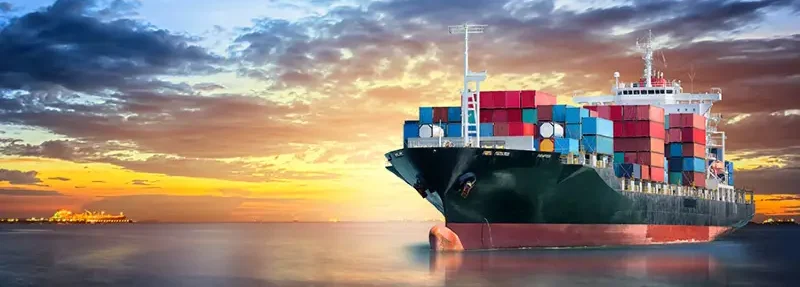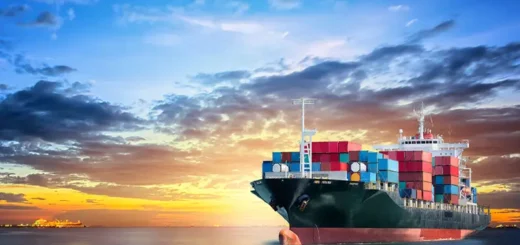Collaborations change logistics scene — Exporter Magazine

International lobbying, company collaborations and smart IT are all factors working to deliver New Zealand exports more efficiently.
One traditional area of expertise in freight forwarding is border clearance documentation for exporters. Documentation problems have driven the Customs Brokers and Freight Forwarders Federation of New Zealand (CBAFF) to attend APEC meetings this year to advocate for small exporters – many of whom struggle with unexpected documentation requirements when ships en route to Asian markets are diverted.
These diversions cause delays– particularly worrying for perishable goods – as well as unexpected extra border clearance documents.
Supported by Chile, CBAFF president Trevor Duxfield told APEC that when a shipping line has to re-route to a third party country, such as Hong Kong on a direct route to China, the exporter often does not realise it needs a Certificate of Non Manipulation (CNM) verifying containers were not tampered with.
“Due to no fault of the forwarder or the exporter, this shipment now requires a CNM. Who obtains it and who pays for it?
Duxfield proposed a harmonised set of “Customs Transit” documentation including the removal of CNMs altogether. He said a CNM acts as a non tariff barrier, and current port security and Customs processes should prevent tampering of sealed containers.
The New Zealand Shippers Council represents the supply chain interests of all sized cargo owners – no longer just big shipping firms. Executive officer Peter Morris was surprised at the recent deal between New Zealand logistics provider Kotahi and Maersk Line New Zealand, and believes it’s not a good idea on balance.
“The ten-year deal between a shipping body and a freight forwarder and shippers would be the first in container trade. However, it has the potential to lessen the competition. If Maersk, supported by Kotahi [owned by Fonterra and Silver Fern Farms], gets 50 to 60 percent of New Zealand’s export trade, will other carriers leave New Zealand?
“Whilst we do not expect this to happen we are concerned that it could happen.”
But Morris gives the qualified thumbs up to the deal between Kotahi and the Port of Tauranga – for the momentum it gives to port preparation for bigger ships, which will help exporters capture significant savings and keep ships coming to New Zealand.
But other ports also need to be able to prepare for big ships.
Morris also warns shippers that from July 2016 every container leaving New Zealand must be weight verified by either an approved IT system that incorporates a method of calculating the weight and can be audited; or on a New Zealand Transport Agency weighbridge, of which there are five nationwide.
The aim is for ships to better balance their loads while maximising space and speed, and to avoid false declarations for insurance purposes.
Collaboration and technology
New Zealand logistics company Netlogix has recently formed a joint venture with the Ports of Auckland, called Nexus Logistics Limited.
Netlogix provides the nationwide trucking network and cloud-based IT system to coordinate the cargo owner and their transport choice, to bring containers to the Ports’ inland port at Wiri for cross-docking (repacking) and redistribution – to any port.
Netlogix chief executive Chinthaka Abeywickrama says, “New alliances, including our 4PL business model [with Ports of Auckland], leverage technology in the collaborative economy to create efficiencies by eliminating waste. The untapped value that exists in the export, import and domestic supply chains can only be extracted via collaboration and use of technology.
“This is not about negotiating price; it eliminates the waste that’s built into the price – so the price can be lower.”
Ports chief executive Tony Gibson says, “We are offering an alternative to Kotahi [logistics company working with the Port of Tauranga] but this is different because we are neutral. Our approach provides a more natural supply chain, matching supply and demand.
“We will truly engage, that is, collaborate with shipping lines and cargo owners to use empties more efficiently.
“[Already] lines have responded well. They are under extreme pressure with dropping freight rates internationally, so to reduce costs this works for them.”
Collaboration seems to be common in logistics, partly to drive business efficiency for all in the supply chain, says Maersk Line New Zealand managing director Gerard Morrison.
“There’s enormous competition in the logistics market and there has been no retraction since the Kotahi deal [with us] was announced. But it’s some size a deal for New Zealand; ten years gives certainty for us as a line to plan more than 12 months ahead and make investment decisions to bring big ships into New Zealand.
“Finding ways to reduce costs is more and more difficult. [These] can only be unlocked if other partners are involved.
“People have been too insular, thinking ‘what can we do on our own to save money and provide better products?’ There’s now more appetite ‘to see what other business complements mine’,” says Morrison.
For all lines, global vessel sharing agreements (VSAs) are a large part of life, but Maersk is not intending a VSA to bring big ships to New Zealand at this stage (although big ships are two to three years away) nor for carrying Kotahi customers’ cargo everywhere in the world.
Shifts are impacting the ways all players service the marketplace, due to the rise of online shopping – affecting importers, exporters and freight forwarders, says Rosemarie Dawson, executive director of CBAFF.
Ice-cream example
In part an exception to the collaboration described above, Emerald Foods ships its ice-cream to 33 markets, and the shipments are arranged mostly in-house by its logistics team.
“Our business is complex so we need internal expertise. We have hundreds of stock keeping units (SKUs) with different loading and handling needs into the various markets,” explains Emerald Foods’ general manager of exports, Fraser Brown.
“But,” he says, “even with our expertise, a freight forwarder can arrange things that we simply can’t. Through their international offices they can arrange destination clearance, trucking and transport easily and efficiently.”
It’s important to understand the supply chain, he advises. “Know what and how it’s happening because if someone makes a mistake it reflects on the exporter. Fully understand how your product gets from A to B.
“Ask a shipping company or freight-forwarder early on for advice. We often involve our insurance provider in our decision-making too. When warehouses overseas hold stock that we own, this has insurance implications.
“Inevitably you have problems along the way, although we have made very few claims. We have had a container malfunction and a couple of generator issues on rail – so don’t skimp on cover or you will be out of pocket at the end of the day.”
Sometimes logistical help is also required at destination because of language difficulties, even though Emerald Foods can call on its own multilingual staff, says Brown.
“But this can’t substitute for in-market expertise. With an office on the ground to deal with regulatory authorities or biosecurity people, freight forwarders know how to expedite shipments, which is especially important with food products. This is critical when regulations can change very quickly or be applied inconsistently from port to port within bigger countries.”
Emerald Foods uses two primary shipping lines chosen for their destination reach and high levels of customer service.
“A sharp price with poor service costs when you have to pick up the pieces, especially with a perishable product,” advises Brown.
Emerald Foods has offices in New Zealand, Australia and China but uses distributors or importers to get goods across the border and into warehouses and to the end customer (the food service and grocery trades).
“Contracts [with distributors] are agreed in advance where possible but in some cultures the contract is the beginning of the negotiation, not the end! So long-term and transparent relationships are important to benefit both parties,” says Brown.
“Sometimes there’s a lot of risk and it comes down to commercial decisions and how you deal with challenges.” And Brown travels a lot.
He says it’s important to get in front of importers/distributors/customers often, making sure Emerald and its customers are happy, or setting up new business relationships.
“It’s also important to find stores that are well managed with robust processes and can actually provide what they say they can.
“Face-to-face you get more out of it; everyone has a better understanding.”
Plan and engage
Exporters need to take the time to plan and engage with their freight partners, says Maersk’s Gerard Morrison.
“There are a lot challenges for exporters and whether they do it alone or with a third party, they need to put time into planning. It’s complicated.
“Choose the right partner – your freight forwarder and shipping lines. We are not all the same; we have very different services and processes.
“Talk to us, to anybody; engage with partners you would like to work with. Ensure they understand your business and have the ability to do what you need.”
Mary MacKinven is an Auckland-based writer.
Email marymackinven@orcon.net.nz
Publishing Information
Magazine Issue
Exporter Magazine November/December 2014 issue 36







